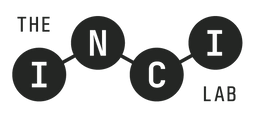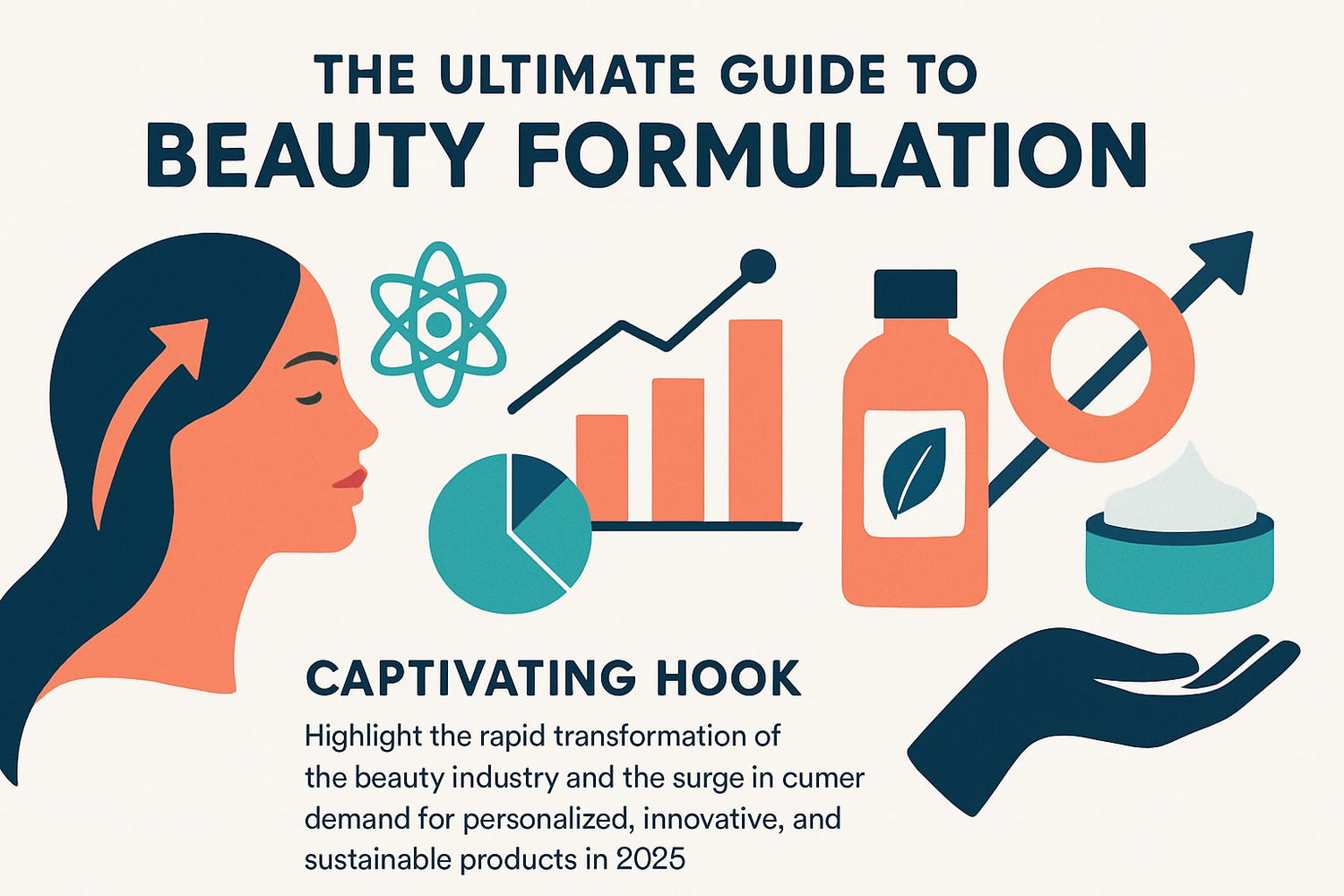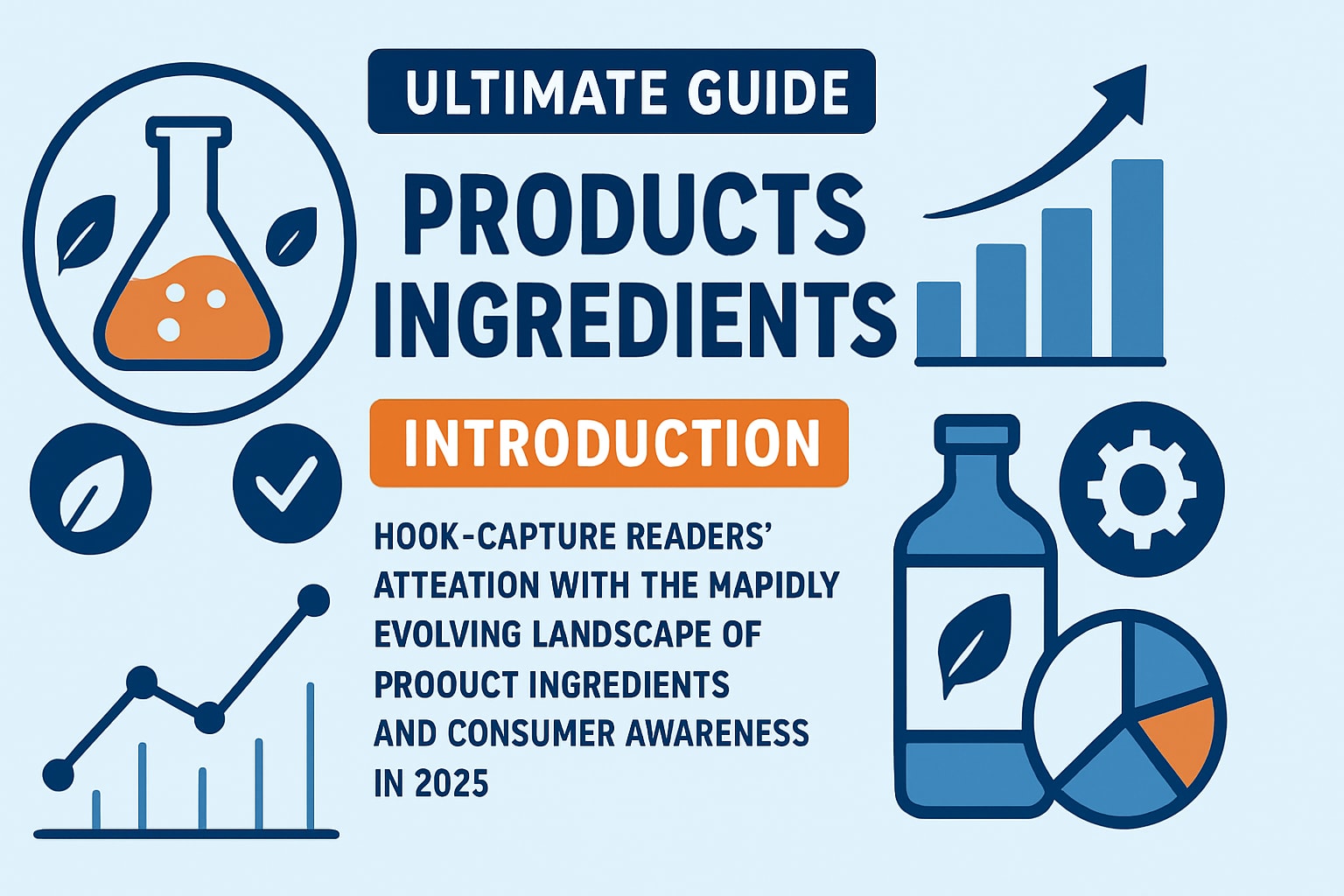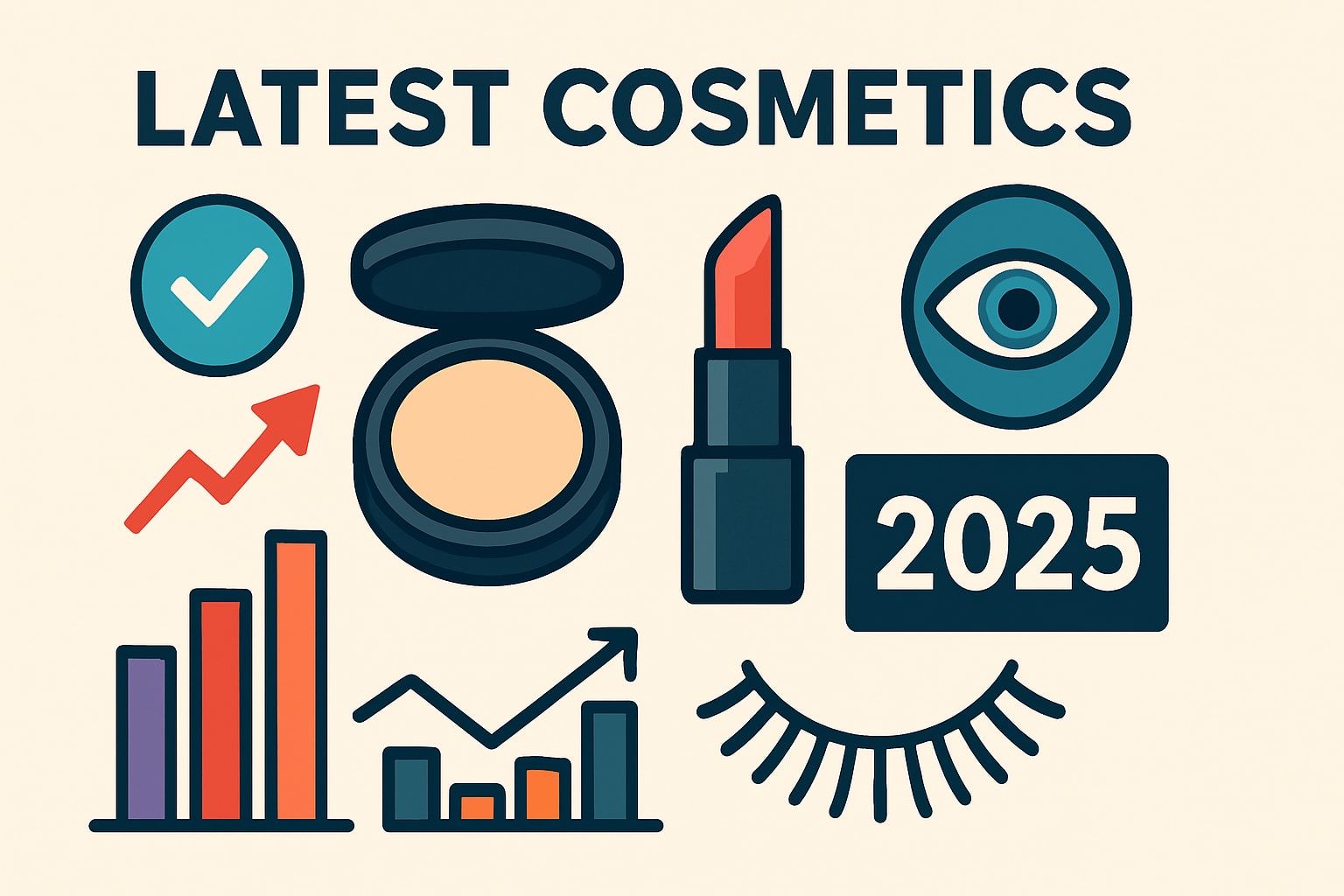The beauty industry is experiencing a remarkable transformation, with 2025 set to redefine expectations for innovation, personalization, and sustainability. As consumers demand more tailored and responsible products, mastering beauty formulation becomes crucial for formulators, entrepreneurs, and brands.
This comprehensive guide provides the latest insights, trends, and practical steps to excel in beauty formulation. Uncover cutting-edge technologies, ingredient innovations, and evolving consumer trends. Discover how to create safe, effective, and sustainable products that resonate with today’s market.
Follow this roadmap to develop high-performance, compliant, and market-ready beauty products that will help you stand out in 2025.
The 2025 Beauty Formulation Landscape: Trends, Technologies, and Consumer Demands
The beauty industry is entering a new era in 2025, marked by rapid change and dynamic consumer expectations. To succeed, brands and formulators must understand the evolving beauty formulation landscape, from breakthrough trends to shifting regulations and market opportunities. Let’s explore the key pillars shaping the future of beauty formulation.

Key Trends Shaping Beauty Formulation in 2025
Personalized and adaptive beauty formulation is taking center stage, with AI-driven customization and multi-functional hybrids like skincare-makeup blends dominating new launches. Clean, vegan, and microbiome-friendly products are now baseline expectations, while wellness and neurocosmetic actives are gaining traction for their mood-boosting benefits. According to Croda Beauty, over 60% of consumers now prefer eco-friendly options. For a deep dive into these developments, see Ingredient Innovation and Trends.
Emerging Technologies and Innovation Drivers
Technology is revolutionizing beauty formulation in 2025. AI-powered tools are streamlining ingredient selection and rapid prototyping, enabling faster innovation cycles. Encapsulation and advanced delivery systems enhance active efficacy and skin penetration, while biotechnology unlocks lab-grown actives and fermentation-derived ingredients. Smart packaging and connected devices are also emerging, offering real-time feedback and personalized routines. These advancements make the beauty formulation process more agile, effective, and consumer-centric.
Changing Consumer Expectations
Today’s consumers are more informed than ever, demanding transparency in beauty formulation. Full ingredient disclosure, supply chain traceability, and ethical sourcing are now essential. There is a pronounced shift toward waterless, minimal-waste, and refillable products, driving innovation in stick, powder, and solid formats. Ingredient databases and digital formulation finders are increasingly used by both brands and consumers to make informed choices, further raising the bar for transparency and trust in beauty formulation.
Regulatory and Safety Considerations
Global regulations are tightening, with the EU, US, and Asian markets imposing stricter standards on ingredient safety, labeling, and claims. Beauty formulation must prioritize allergen-free, hypoallergenic, and dermatologist-tested products to meet compliance. Recent years have seen new restrictions on certain actives and preservatives, making proactive regulatory monitoring critical. Adhering to these evolving requirements is essential for launching safe, effective, and legally compliant beauty formulation across diverse global markets.
Market Segmentation and Niche Opportunities
The beauty formulation landscape in 2025 is increasingly segmented, offering opportunities for indie, luxury, and inclusive brands to thrive. Niche markets like pet care and men’s grooming are expanding rapidly, while multi-use and hybrid products meet the needs of diverse lifestyles. Brands that embrace these segments and tailor their beauty formulation strategies accordingly will be well-positioned for growth. Staying agile and innovative is key to capturing these emerging opportunities.
Step-by-Step Guide to Modern Beauty Formulation
Mastering beauty formulation in 2025 requires a strategic, methodical approach. Each stage, from concept to launch, plays a vital role in ensuring products are innovative, effective, and compliant. Explore this step-by-step roadmap to streamline your process and deliver high-performance beauty solutions.

Step 1: Ideation and Market Research
The first step in beauty formulation is identifying market gaps and emerging trends. Analyze consumer needs, competitor products, and global shifts using digital tools and social listening platforms.
Define your target audience and craft a unique value proposition. Benchmark against established brands, but seek inspiration from indie innovators.
Utilize online formulation finders to generate ideas and validate concepts. A strong ideation phase ensures your beauty formulation aligns with demand, giving your project a competitive edge.
- Analyze market and consumer data
- Use trend reports and competitor analysis
- Leverage idea-generation platforms
Step 2: Ingredient Selection and Sourcing
Choosing the right ingredients is crucial for effective beauty formulation. Focus on actives, excipients, and functional ingredients that deliver performance and safety.
Source sustainable, COSMOS or ECOCERT certified, and vegan-friendly raw materials. Assess supplier transparency and ethical sourcing practices to meet both regulatory and consumer expectations.
Incorporate biotech-derived actives for innovation and differentiate your beauty formulation. Traceable, high-quality ingredients are the foundation of a standout product.
- Prioritize efficacy and safety
- Select certified, ethical suppliers
- Explore biotech and upcycled options
Step 3: Prototype Development and Formulation Design
Prototype development brings your beauty formulation to life. Balance texture, stability, and sensory appeal to create a product that delights users.
Leverage AI-driven formulation tools for rapid prototyping and optimization. Adjust actives, pH, and compatibility through iterative testing to ensure your beauty formulation meets all specifications.
Customize base formulas for diverse applications, such as serums, gels, or creams, and tailor them to target specific concerns.
- Optimize stability and texture
- Use digital tools for efficiency
- Iterate for best results
Step 4: Safety, Stability, and Efficacy Testing
Safety and efficacy are non-negotiable in beauty formulation. Conduct microbiological, preservative, and stability tests to ensure product integrity.
Perform in-vitro and in-vivo studies, along with consumer perception trials, to validate claims. For sensitive skin products, allergen and irritancy testing is essential.
For a detailed breakdown of these processes, see Steps to Formulate Safe Cosmetics. Comprehensive testing protects consumers and builds trust in your beauty formulation.
- Test for microbial stability
- Validate efficacy and safety
- Document all findings
Step 5: Regulatory Compliance and Documentation
Every beauty formulation must comply with global regulations. Navigate EU, US, and Asian standards by preparing accurate Product Information Files (PIF), Safety Data Sheets (SDS), and ingredient lists.
Ensure label claims are substantiated and packaging meets legal requirements. Adapt formulations for different markets to avoid costly delays or recalls.
Leverage compliance tools and consult regulatory experts for seamless market entry. Detailed documentation is the backbone of compliant beauty formulation.
- Prepare required legal documents
- Substantiate all claims
- Adapt for each market
Step 6: Scale-Up and Production
Transitioning from lab to production is a pivotal stage in beauty formulation. Manage pilot and full-scale manufacturing to guarantee batch consistency and quality.
Assess packaging compatibility and shelf-life to ensure product stability over time. Address challenges unique to waterless and solid formats, which are increasingly popular in sustainable beauty formulation.
Implement robust quality control protocols to minimize risk and maximize efficiency.
- Ensure batch-to-batch consistency
- Test packaging and shelf-life
- Monitor production quality
Step 7: Launch and Post-Market Surveillance
A successful launch requires strategic packaging, branding, and marketing tailored to 2025 consumers. Collect post-launch feedback to refine your beauty formulation and stay ahead of evolving demands.
Implement traceability and recall systems for ongoing safety monitoring. Iterative improvement, based on real-world use, ensures your beauty formulation remains competitive and compliant.
- Launch with strong branding
- Gather consumer feedback
- Maintain robust safety systems
Ingredient Innovation: Spotlight on Actives, Excipients, and Sustainable Choices
Ingredient innovation is the heart of modern beauty formulation. In 2025, the focus has shifted to breakthrough actives, advanced excipients, sustainable sourcing, and transparent practices. These elements not only elevate product performance but also ensure compliance and consumer trust.

Breakthrough Actives and Functional Ingredients
The foundation of effective beauty formulation in 2025 lies in cutting-edge actives. Peptides, such as the Matrixyl range, drive collagen support and visible skin renewal. Ceramides reinforce the skin barrier, while neurocosmetic actives like Zenakine™ target wellness and mood. Biotech and fermentation-based actives offer potent efficacy with a sustainable edge, meeting the demand for clean, high-performance solutions.
Multi-benefit botanicals and adaptogens further enhance the appeal of modern beauty formulation. For instance, peptide plumping sticks and ceramide eye emulsions showcase how innovation delivers visible results. To understand the importance of selecting quality actives, see The Importance of Quality Formulations.
Excipients and Formulation Enhancers
Excipients are the unsung heroes of beauty formulation. Emulsifiers, thickeners, and stabilizers ensure product stability, texture, and performance. Advances in encapsulation technology allow actives to be delivered exactly where needed, improving both efficacy and user experience.
Take Syncrowax™ in mascaras as an example. It optimizes texture and ensures even application, a crucial aspect of beauty formulation. Selecting the right excipients means balancing function, feel, and compatibility with active ingredients.
Sustainability in Ingredient Sourcing
Sustainability is now integral to every beauty formulation. Brands prioritize natural, biodegradable, and upcycled raw materials to reduce environmental impact. Certifications like COSMOS, ECOCERT, vegan, and cruelty-free assure consumers of ethical sourcing.
Innovative products such as 100% natural sun sticks and waterless formulations exemplify this approach. By choosing sustainable ingredients, beauty formulation meets both regulatory standards and growing consumer expectations for eco-conscious products.
Transparency and Traceability
Transparency is vital in beauty formulation. Consumers want to know exactly what goes into their products. Ingredient databases and digital traceability tools are widely used to provide full disclosure and support ethical sourcing.
This trend ensures that beauty formulation aligns with consumer demand for honesty and accountability. Brands that embrace traceability build greater trust and differentiate themselves in a crowded market.
Addressing Allergenicity and Sensitivities
Allergenicity and skin sensitivities are top concerns in beauty formulation. Formulators are creating hypoallergenic, fragrance-free, and dermatologist-tested products to cater to sensitive skin.
Examples include mild cleansing shampoos and gentle skincare bases. Addressing sensitivities with careful ingredient selection ensures that beauty formulation is safe, inclusive, and suitable for a wider audience.
Regulatory Compliance and Safety in 2025: Navigating Global Standards
Navigating regulatory compliance is more critical than ever for successful beauty formulation in 2025. With evolving global standards, brands must stay agile to ensure their products are safe, effective, and market-ready.

Evolving Regulatory Landscape
The regulatory landscape for beauty formulation is rapidly changing. In 2025, the EU, US (with MoCRA implementation), and Asian markets have introduced stricter ingredient bans, updated labeling requirements, and enhanced documentation protocols.
For example, the EU is enforcing tighter controls on allergens, preservatives, and UV filters. The US Modernization of Cosmetics Regulation Act (MoCRA) now mandates comprehensive safety substantiation. Asian markets are increasing scrutiny on imported ingredients. Staying informed with resources such as the Global beauty industry outlook 2025 helps brands anticipate and adapt to these shifts.
Safety Assessment and Product Testing
Robust safety assessment is at the core of every compliant beauty formulation. Toxicological risk assessments are mandatory for both traditional and biotech-derived actives. Brands must conduct thorough microbiological, preservative, and stability testing to ensure product safety throughout shelf life.
New ingredients, like neurocosmetic actives, require additional substantiation. Both in-vitro and in-vivo studies help validate claims and minimize risk. A proactive approach to safety testing not only protects consumers but also supports regulatory approval across global markets.
Documentation and Claims Management
Meticulous documentation is essential for beauty formulation compliance. Brands must maintain a comprehensive Product Information File (PIF), Safety Data Sheets (SDS), and detailed ingredient lists for each product.
Accurate marketing claims demand substantiation. Regulatory audits often focus on label accuracy and proof of efficacy. Tools such as digital compliance checklists and label review platforms streamline the process. Diligence in documentation not only satisfies regulators but also builds consumer trust.
International Market Entry Strategies
Expanding beauty formulation into new markets requires adapting to diverse regulatory frameworks. The EU, US, and China each have unique requirements for ingredient approval, labeling, and safety substantiation.
For instance, animal testing bans in the EU and China’s evolving pre-market registration rules impact product launch strategies. Successful brands customize formulations, documentation, and claims to meet each region’s standards. This adaptability is key to efficient, compliant market entry.
Working with Regulatory Experts
Partnering with regulatory consultants is invaluable for beauty formulation brands in 2025. Experts help navigate complex global requirements, from ingredient restrictions to documentation protocols.
Consultants provide guidance on compliance audits, dossier preparation, and regulatory updates. Their expertise reduces risk and accelerates time to market. For brands aiming to innovate while maintaining compliance, leveraging specialist support is a strategic advantage.
Sustainability and Eco-Conscious Formulation: Meeting the Demands of 2025
Sustainability is reshaping beauty formulation in 2025, as brands and formulators respond to consumer demand for products that are both high-performing and eco-conscious. Today’s beauty industry leaders are prioritizing innovative formats, ethical ingredient sourcing, and transparent sustainability practices to build trust and stand out in a crowded market.
Waterless, Solid, and Minimal-Waste Formulations
Waterless and solid beauty formulation options, such as sun sticks, powder cleansers, and multi-use balms, are gaining traction for their lower environmental impact. These formats require less packaging, reduce shipping weight, and appeal to consumers seeking convenience and sustainability. According to Top beauty trends 2025, minimal-waste solutions and innovative product forms are driving purchasing decisions in the new era of eco-conscious beauty.
Brands are experimenting with concentrated bars and refillable powder formulas, allowing users to mix products with water at home. This not only cuts down on plastic use but also aligns with a broader movement toward responsible beauty formulation that minimizes waste at every stage.
Sustainable Packaging and Circularity
Packaging innovation is vital for eco-conscious beauty formulation. Companies are investing in refillable, biodegradable, and recycled packaging, with some utilizing smart packaging to enhance traceability and consumer engagement. Circularity initiatives, such as take-back programs and reusable containers, further reduce environmental impact.
| Packaging Type | Sustainability Benefit |
|---|---|
| Refillable glass | Reduces single-use waste |
| Biodegradable tubes | Compostable after use |
| Recycled plastics | Lowers carbon footprint |
Smart labels and QR codes can provide transparency about sourcing and promote recycling, helping brands close the loop in their beauty formulation lifecycle.
Green Chemistry and Biotech Solutions
Green chemistry is central to sustainable beauty formulation. Formulators are leveraging renewable, upcycled, and lab-grown ingredients to replace traditional extracts and reduce resource depletion. Biotech actives not only lower the environmental footprint but can also boost product efficacy.
Lab-grown peptides, fermentation-based antioxidants, and upcycled plant oils are just a few examples used in 2025. These advances allow for cleaner, safer, and more consistent ingredient sourcing, making beauty formulation both innovative and planet-friendly.
Ethical Sourcing and Fair Trade
Ethical sourcing is a cornerstone of responsible beauty formulation. Brands are increasingly vetting suppliers for transparency, fair trade practices, and social responsibility. Certifications such as COSMOS, ECOCERT, and Fair Trade serve as trust signals for consumers.
Ensuring a transparent supply chain helps brands demonstrate their commitment to people and the planet. This approach not only supports local communities but also fosters long-term relationships with ingredient producers, which benefits everyone involved in the beauty formulation process.
Measuring and Communicating Sustainability
Accurate measurement and clear communication are essential for sustainable beauty formulation. Brands are adopting life cycle analysis and carbon footprint assessments to benchmark their environmental impact. Transparent claims, backed by robust data, build consumer trust and differentiate products in a saturated market.
Education plays a key role, as consumers expect honest information about how sustainability is achieved in every step of beauty formulation. This transparency helps set realistic expectations and nurtures loyalty among eco-conscious buyers.
Future Outlook: The Next Frontier in Beauty Formulation
The future of beauty formulation is unfolding at an unprecedented pace. Brands, formulators, and entrepreneurs must stay ahead by embracing new technologies, consumer demands, and market shifts. The next frontier is defined by personalization, wellness, barrier health, and cross-category innovation.
The Rise of Personalized and AI-Driven Formulations
Personalization is set to redefine beauty formulation in 2025. AI-powered tools analyze consumer data, skin needs, and environmental factors to create tailored formulas in real time. Formulation finders and connected beauty devices are rapidly gaining traction. According to the State of Beauty 2025 report, digital acceleration is fueling this evolution, making customization accessible to brands of all sizes.
Neurocosmetics and Wellness-Driven Beauty
Neurocosmetics bring a new dimension to beauty formulation by targeting mood, stress, and overall well-being. Actives like Zenakine™ are designed to enhance relaxation and emotional balance. This aligns with a growing focus on holistic beauty, where products do more than improve appearance; they support wellness from the inside out. Brands are leveraging scientific advances to create experiences that resonate with consumers’ emotional needs.
Microbiome-Friendly and Skin Barrier-Focused Products
Supporting the skin’s microbiome is becoming essential in beauty formulation strategy. Prebiotics, probiotics, and ceramides are key ingredients that help maintain barrier health and protect against environmental stressors. New formulations prioritize gentle actives and minimal irritants, catering to sensitive skin types. As research deepens, expect even more targeted products that nurture the skin’s natural defenses.
Cross-Category Innovation: From Beauty to Pet Care
The expertise gained in beauty formulation is now expanding into pet and personal care. Brands are formulating grooming and wellness products for pets, applying the same standards of efficacy and safety used in human skincare. This cross-category trend reflects a broader shift toward holistic care for all family members, opening new opportunities for innovation and market growth.
The Role of Indie Brands and Agile Innovation
Indie brands are driving significant change in the beauty formulation landscape. Their agility allows them to experiment with new textures, formats, and sustainable concepts. These smaller players often lead the way in adopting eco-friendly packaging and waterless technologies. Their bold approach inspires established brands to innovate faster, pushing the entire industry forward.
Preparing for 2030: Trends to Watch
Looking ahead, several early signals are shaping the next era of beauty formulation. Blue beauty, climate-adaptive ingredients, and biotech breakthroughs are on the horizon. Ongoing education, adaptability, and direct consumer engagement will be critical for success. For in-depth analysis of these emerging trends, consult the CEW Global Trend Report 2025. Vigilant observation and innovation will ensure brands remain at the forefront in a rapidly evolving market.
As we’ve explored, mastering beauty formulation in 2025 means embracing innovation, sustainability, and compliance at every step. Whether you’re an entrepreneur ready to disrupt the market or an established brand aiming to evolve, the real journey starts with turning insights into action. If you’re inspired to develop high-performance, eco-conscious products that reflect the latest trends and technologies, we’re here to support you from concept through production. Let’s work together to bring your unique vision to life and help your brand truly stand out. Ready to take the next step? Start Your Product Journey



